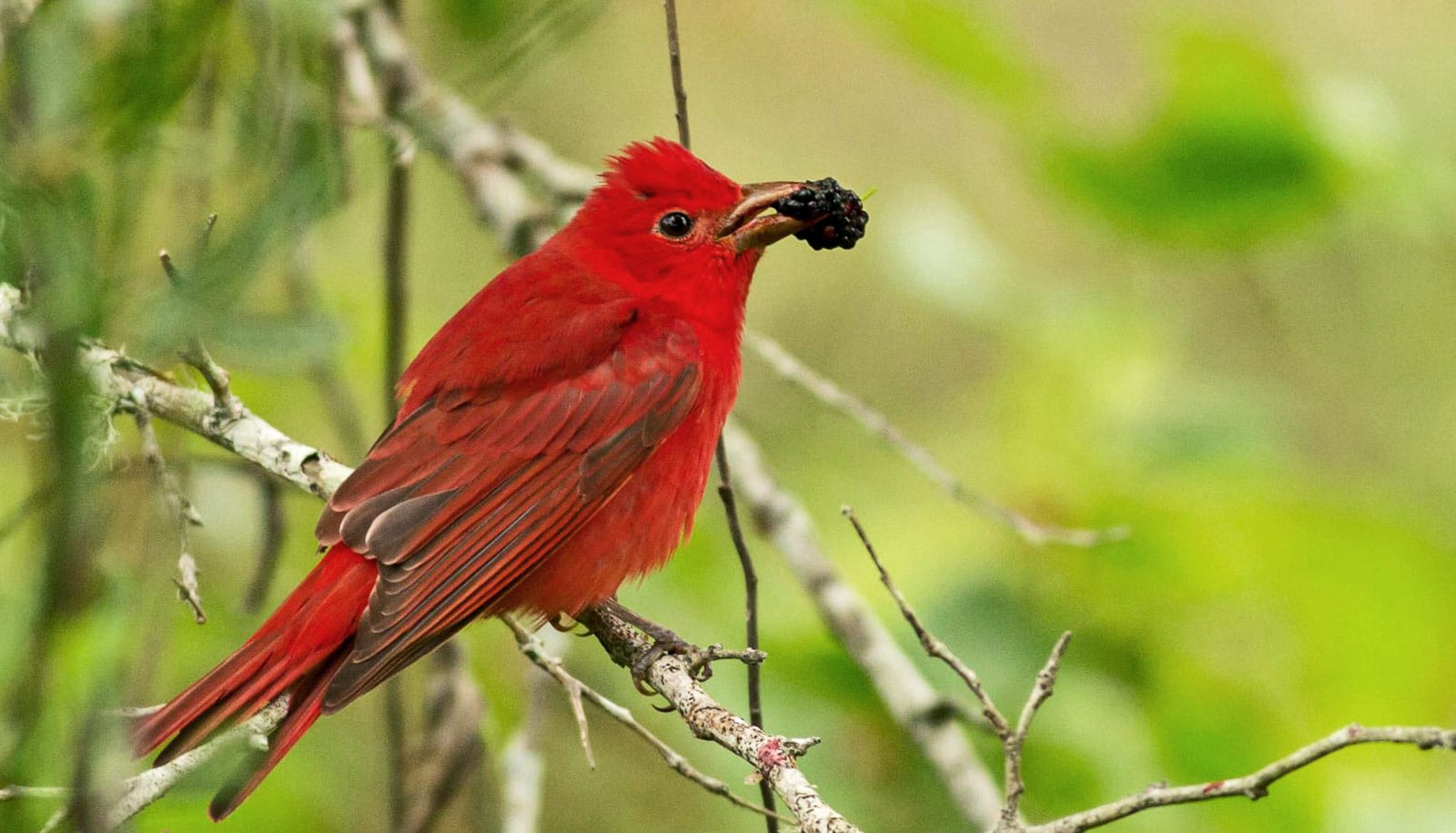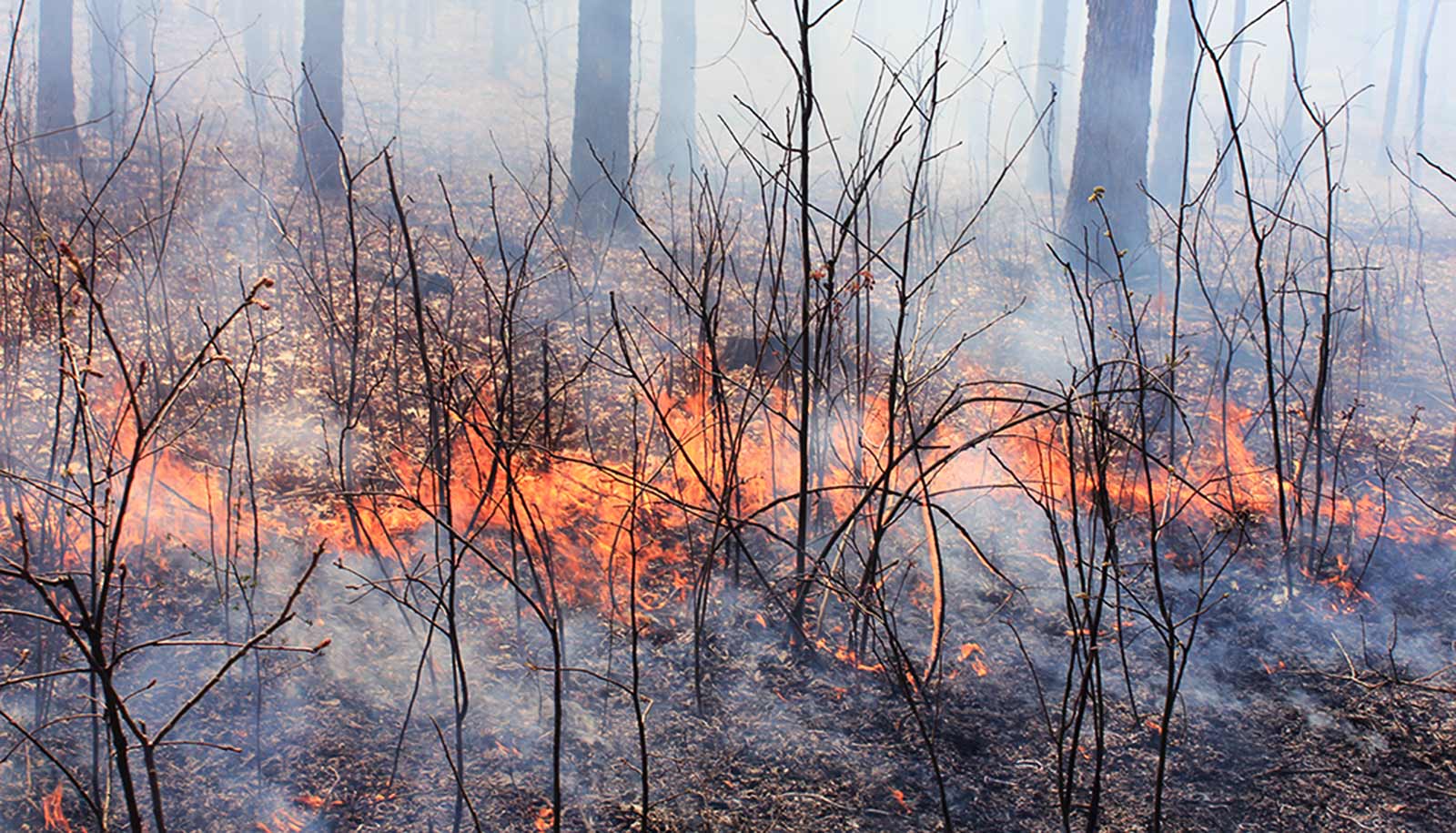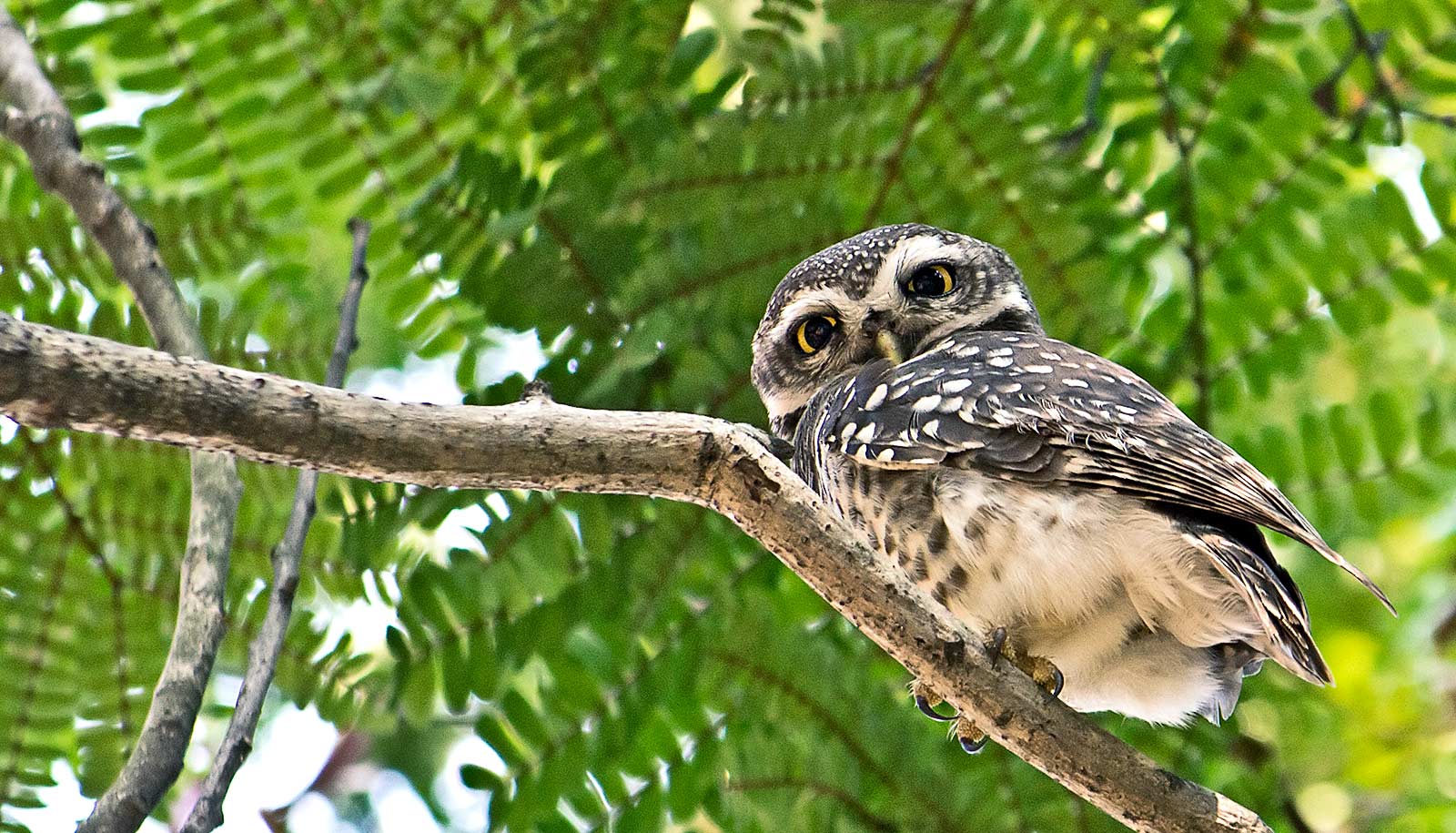A diverse array of Midwest birds are thriving, thanks to restoration of pine woodlands, through intentional, managed fires and strategic thinning of tree density, report researchers.
Millions of acres of pine woodlands once covered a large portion of the Midwest. But as humans logged trees and suppressed natural fires, they gave way to dense forests with less fire-resistant leaf litter and tree species, leading to unpredictable fires and the loss of native bird habitats.
“Some people might hear the words ‘fire’ and ‘thinning’ and immediately imagine charred, flattened wastelands, but that isn’t the reality,” says Melissa Roach, a researcher with the US Geological Survey’s Bird Banding Lab who carried out the study while completing her master’s degree at the University of Missouri.
“Researchers are using these management techniques to restore beautiful open woodlands. In this study, we found that birds that have been struggling elsewhere are positively thriving in these restored areas.”
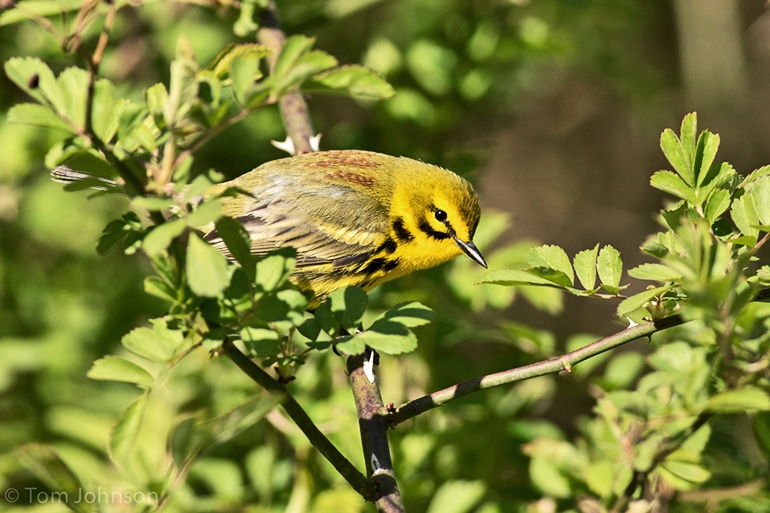
Open canopy, lush floor
Roach worked with Frank Thompson, a cooperative professor at the College of Agriculture, Food and Natural Resources and a wildlife biologist with the USDA Forest Service to survey 16 bird species in varying degrees of pine woodland density.
The woodlands are in parts of Missouri, Arkansas, and Oklahoma in the Ozark-Ouachita Mountain Complex. Roach returned to the same locations three years in a row to monitor the bird populations over time.
The findings show that the restored pine woodland created an open canopy and a lush ground layer, and was ideal for allowing a balance between species that prefer less tree density and canopy cover with those that prefer more.
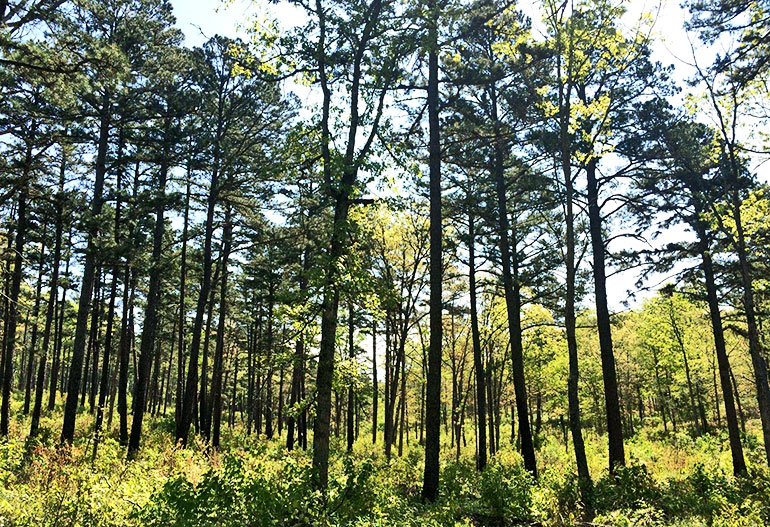
Several birds researchers observed thriving in this habitat are in decline elsewhere, including the red-headed woodpecker and the prairie warbler. The restoration affected only five species negatively, but they remain abundant in the untreated forests that still dominate the Midwest.
Researchers also isolated two management practices—controlled fires and tree thinning—to determine their individual effects on bird abundance. Eight of the 16 species of birds, including the red-headed woodpecker, were more numerous in areas with a history of fires, while four species benefited from thinning.
All kinds of birds
Taken together, the results suggest that restoring pine woodlands in conjunction with prescribed fires and tree thinning can create suitable habitats for a wide range of birds, Thompson says.
“Our study shows that restoration using fire and tree-thinning leaves large, widely-spaced trees for canopy-nesting species while allowing the development of grasses and shrubs for ground or shrub-nesting species,” he says.
“Given that we took care to survey birds with diverse breeding requirements, we can see that restored pine woodlands can support many different birds with different needs, whether they nest on the ground, in shrubs, or high in the canopies of mature trees. This is a powerful testament to the need to continue restoring these woodlands, which are also rich in plant diversity and likely more sustainable in many cases than closed forests under climate change.”
The study appears in Forest Ecology and Management. The US Department of Agriculture Forest Service Northern Research Station, Mark Twain National Forest, and Ouachita National Forest funded the work.
Source: University of Missouri
